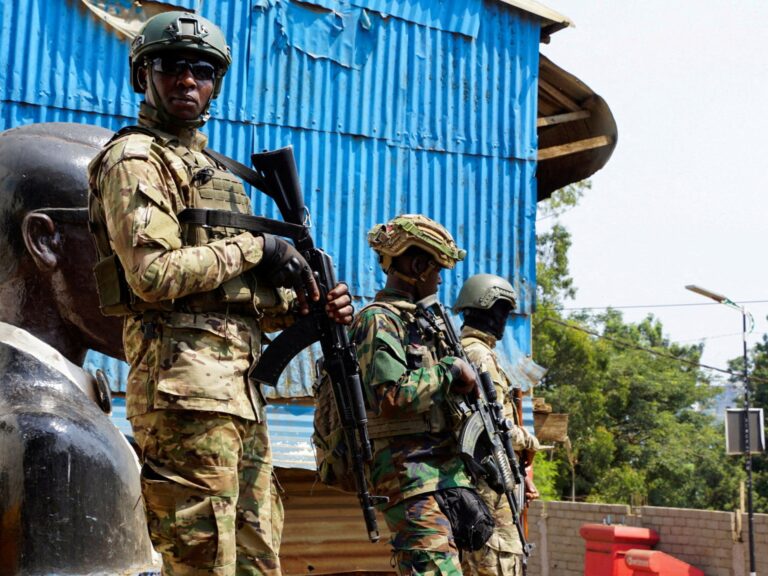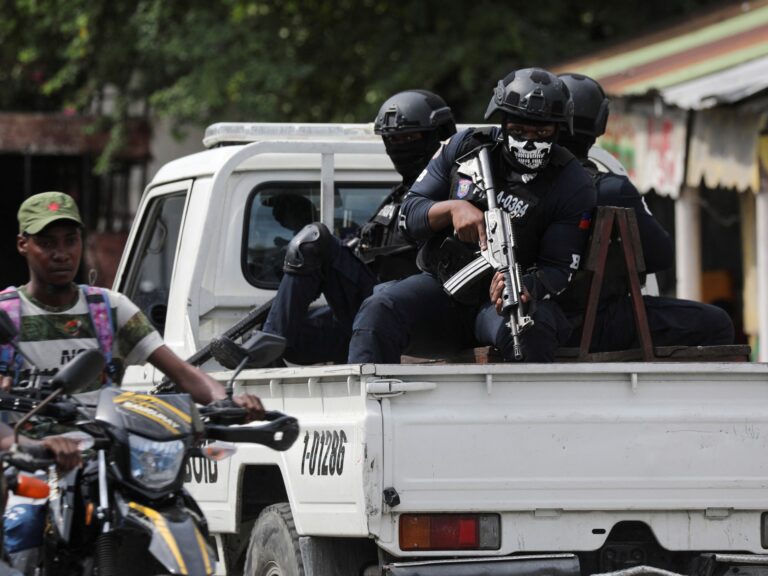The largest of the deadly Los Angeles wildfires is changing direction and posing a new threat
The largest of the raging wildfires that have ravaged parts of Los Angeles this week changed direction Saturday, triggering more evacuation orders and creating a new challenge for exhausted firefighters.
Since Tuesday, six wildfires have killed at least 11 people and damaged or destroyed more than 10,000 structures in Los Angeles County neighborhoods. Losses are expected to rise as firefighters are able to conduct house-to-house searches.
Los Angeles County Sheriff Robert Luna said Saturday that 13 people were missing and about 40 search and rescue teams were being dispatched to wildfire areas.
The fierce Santa Ana winds that had been fueling the inferno on Friday night subsided. The Palisades fire on the city’s western edge was headed in a new direction with another evacuation order as it moved toward the Brentwood neighborhood and foothills of the San Fernando Valley, the Los Angeles Times reported.
Los Angeles Fire Department Capt. Eric Scott told local station KTLA that “the Palisades fire has gained significant new fire in the eastern part and is continuing to the northeast,” according to a report on the LA Times website.
Devastating wildfires continue in Los Angeles and southern California. About 10,000 buildings were damaged or destroyed, and more than 180,000 people were displaced. Andrew Chang explains how drought conditions and Santa Ana winds contributed to the Palisades Fire in LA County, the largest of the blazes, and why firefighters are struggling to contain it. Images collected from Reuters, Getty Images and The Canadian Press.
The most devastating fire in Los Angeles history, it razed entire neighborhoods and left people’s homes and property in burning ruins.
Firefighters reported progress on the Palisades Fire and the Eaton Fire in the foothills east of the metropolis after days of being out of control before the latest flare-up. As of Saturday morning, the Palisades fire is 11 percent contained and the Eaton fire is 15 percent contained, state agency Cal Fire said.
The two large fires combined burned 14,100 hectares, or 141 square kilometers – about 2½ the area of Manhattan.
Luna said Friday that 153,000 people were under evacuation orders and another 166,800 were under evacuation warnings, with a 6 p.m. to 6 a.m. curfew in place for all evacuation zones.
On Saturday, he said police made 22 arrests for curfew violation, robbery, trespassing and robbery.
“I’m just telling you, you go out there and violate this curfew, you’re going to spend time in jail. You’re not going to be cited and you’re not going to be released,” Luna said at a briefing Saturday.
Seven neighboring states, the US federal government and Canada they sent aid to California, reinforcing air teams dropping water and fire retardant on the burning hills and crews attacking fire lines with hand tools and hoses.
The weakening wind speed may increase next week
The US National Weather Service (NWS) said conditions in the Los Angeles area will improve over the weekend, with sustained winds around 20 mph, with gusts between 56 mph and 80 mph.
“It’s not that windy, so that should help the firefighters,” NWS meteorologist Allison Santorelli said, adding that conditions are still critical with low humidity and dry vegetation.
Cal Fire said strong winds are likely again Tuesday.
“A high probability of critical fire weather conditions will continue into next week,” he said.
On Friday, the US Department of Health and Human Services declared a public health emergency for California due to the thick, toxic smoke.
Houses were reduced to ashes
Residents of Pacific Palisades who returned to their devastated neighborhoods on Friday were shocked to see brick chimneys rising above charred debris and charred vehicles as acrid smoke hung in the air.
“It was a loved home,” Kelly Foster, 44, said as she combed through the rubble where her home once stood.
A series of images from Google and Reuters show some of the devastation in Los Angeles, where raging wildfires have destroyed at least 10,000 structures. (Photo credit: Google/Reuters)
Foster’s 16-year-old daughter Ada said she tried to get in, but “I was just sick. I couldn’t even… Yeah, it’s hard.”
Only six of the 60 houses in Rick McGeagh’s Palisades neighborhood survived, and all that remained on his farm was a statue of Mary.
“All that’s left is ashes and rubble,” said McGeagh, 61, a commercial real estate broker who raised three children in their home with his wife.
Francois Auroux recounts the moment he went to check on his neighbors in California and escaped the Palisades wildfire by bicycle, running through the flames in a desperate attempt to get back to his family.
Hundreds of people flocked to the parking lot near the Rose Bowl in Pasadena, Calif., on Friday morning to donate clothes, diapers and bottled water.
Denise Doss, 63, said she was anxious to return to her destroyed home in Altadena, Calif., to see if there was anything salvageable, but authorities stopped her because of safety concerns.
“At least it’s goodbye until we rebuild. I’m going to let God lead me,” Doss said.
Losses in the billions
Many Altadena residents said they worry that government resources will go to wealthier areas and that insurers could short-change those who can’t contest the denial of fire claims.

In addition to those who lost their homes, tens of thousands of people were left without power and millions more were exposed to worse air quality as the fires exposed a trail of metal, plastic and other synthetic materials.
Private forecaster AccuWeather estimated the damage and economic loss at between $135 billion and $150 billion, pointing to a difficult recovery and increased homeowners’ insurance costs.
Los Angeles County’s unprecedented wildfires are fueled by unusually dry weather and hurricane-force winds, and experts warn the problem is not unique to California.
California Insurance Commissioner Ricardo Lara on Friday urged insurers to freeze pending renewals and cancellations that homeowners received before the fires started and to extend the grace period for payments.
President Joe Biden declared the fires a major disaster and said the US government would cover 100 percent of recovery costs over the next six months.












